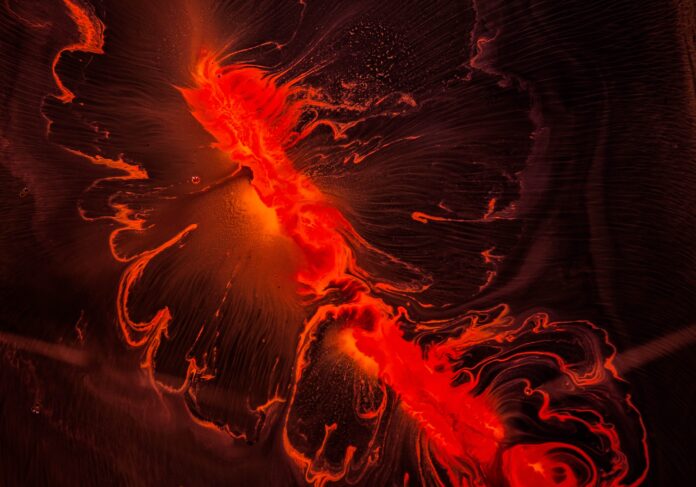Space Debris Removal Satellites: Clearing the Cosmos of Orbital Clutter
In the vast expanse of space, an invisible threat looms over the bustling network of satellites, spacecraft, and space stations that humanity has propelled into orbit over the decades. This threat comes in the form of space debris, fragments of defunct satellites, spent rocket stages, and other discarded objects left behind from various space missions. As these fragments whiz around the Earth at incredible speeds, they pose a significant risk to operational spacecraft, creating a dangerous environment that could hinder future space exploration and exploitation of outer space resources. To counter this escalating issue, space agencies and private companies are increasingly turning to innovative solutions, including the development of Space Debris Removal Satellites. These advanced satellites are designed not only to remove existing debris but also to mitigate the potential for future debris generation, ensuring the sustainability of Earth’s orbital environment.
Space Debris Removal Satellites, often referred to simply as debris removal satellites or debris removal spacecraft, represent a technological response to the growing concern of space debris accumulation. The concept behind these satellites is to actively locate, capture, and dispose of defunct satellites, spent rocket stages, and other hazardous fragments that pose a risk to operational spacecraft. Unlike passive measures that focus on preventing collisions, such as adjusting orbits to avoid debris, these removal satellites take a proactive approach by physically removing debris from orbit. This approach not only reduces the risk of collisions but also addresses the larger issue of long-term space sustainability.
The need for effective space debris removal has become more urgent as the number of active satellites in orbit continues to rise. With an increasing number of countries and private entities launching satellites for communication, navigation, weather monitoring, scientific research, and other purposes, Earth’s orbital environment has become increasingly crowded. This crowding, coupled with the debris generated from past space missions, has led to a situation where the probability of collisions between operational satellites and space debris has significantly increased. Even a small collision with a high-speed fragment can generate thousands of new debris pieces, creating a chain reaction known as the Kessler syndrome, wherein the density of debris increases to the point where it becomes practically impossible to safely operate in certain orbital regions.
Space agencies and commercial companies around the world have recognized the urgent need to address this issue and are investing in the research and development of Space Debris Removal Satellites. These satellites employ a variety of innovative technologies to capture and remove debris, contributing to a cleaner and safer orbital environment. One approach involves using robotic arms or tentacle-like structures to grapple onto debris objects and guide them to a controlled reentry into Earth’s atmosphere, where they burn up upon reentry. Another approach utilizes nets or harpoons to ensnare debris and then uses a propulsion system to lower their orbits until they reenter the atmosphere. These technologies require a high degree of precision and autonomous control, as debris objects can vary widely in size, shape, and composition.
One of the critical challenges in space debris removal is the ability to accurately track and locate the thousands of debris objects currently in orbit. This necessitates sophisticated sensors and tracking systems that can precisely determine the position, velocity, and trajectory of each object. Additionally, coordination among various stakeholders, including space agencies, satellite operators, and debris removal satellite operators, is essential to prevent conflicts and ensure the effective removal of debris. International collaboration and standardized practices are crucial to developing a comprehensive solution to the space debris problem.
In conclusion, the proliferation of space debris poses a significant threat to the safety and sustainability of activities in Earth’s orbit. Space Debris Removal Satellites offer a promising solution to this problem by actively seeking out and eliminating hazardous debris objects. These advanced satellites not only reduce the risk of collisions but also contribute to the long-term viability of space exploration and utilization. As the global space community continues to innovate in this field, the development of effective debris removal technologies and practices will play a vital role in shaping the future of space activities.
Active Debris Removal:
Space Debris Removal Satellites are designed to actively locate, capture, and dispose of defunct satellites, spent rocket stages, and other space debris objects, mitigating the risk of collisions and potential generation of further debris.
Proactive Solution:
Unlike passive measures, such as collision avoidance maneuvers, debris removal satellites take a proactive approach by physically removing debris from orbit, addressing the root cause of the space debris problem.
Advanced Capture Mechanisms:
These satellites employ innovative technologies such as robotic arms, tentacle-like structures, nets, and harpoons to grapple onto debris objects, allowing for secure capture and control during removal operations.
Precision and Autonomy:
Due to the complex and dynamic nature of space environments, debris removal satellites require a high degree of precision and autonomous control to ensure successful capture, maneuvering, and disposal of debris objects.
Diverse Debris Types:
Debris removal satellites are versatile in their ability to capture and remove various types of debris, ranging from small fragments to large defunct satellites and rocket stages, addressing a wide spectrum of debris sizes.
Tracking and Sensing Systems:
Equipped with advanced sensors and tracking systems, these satellites accurately monitor the position, velocity, and trajectory of both debris and operational spacecraft, enabling effective navigation and collision avoidance.
Orbit Raising and Reentry:
Once captured, debris removal satellites can employ propulsion systems to alter the trajectory of debris objects, either raising them to a higher orbit for controlled reentry or directly guiding them towards atmospheric reentry and burn-up.
Sustainable Orbital Environment:
By removing existing debris and preventing further collisions, these satellites contribute to a cleaner, safer, and more sustainable orbital environment for both current and future space activities.
International Collaboration:
Addressing the global issue of space debris requires collaboration among various stakeholders, including space agencies, satellite operators, and debris removal satellite operators, to develop standardized practices and guidelines for effective debris removal.
Long-Term Space Viability:
Space Debris Removal Satellites play a vital role in ensuring the long-term viability of space exploration, satellite communication, scientific research, and other orbital activities by reducing the risk of catastrophic collisions and the resulting cascade of debris generation.
Incorporating these key features, Space Debris Removal Satellites offer a promising solution to the pressing challenge of space debris accumulation, safeguarding our orbital environment and enabling continued human presence and exploration in space.
In the vast cosmic arena that extends beyond our planet, an intricate dance of celestial bodies and human-made creations unfolds. Among the celestial wonders and technological marvels, an increasingly concerning issue has emerged—space debris. This growing cloud of defunct satellites, spent rocket stages, and discarded fragments poses a significant threat to the very domain it inhabits. As we gaze upward to explore the realms beyond Earth, we find ourselves entangled in the remnants of our own scientific and exploratory endeavors. In response to this challenge, scientists, engineers, and visionaries are turning their attention to a new breed of celestial custodians—Space Debris Removal Satellites.
Imagine a spacefaring world where the night sky is not just a tapestry of stars and planets, but also a realm frequented by the remnants of humanity’s technological pursuits. Decades of satellite launches, space missions, and exploratory endeavors have left behind a trail of debris, reminding us of our relentless quest to understand the cosmos. However, this trail has morphed into a potential hazard, a labyrinth of obstacles that threatens the future of space exploration. The silent and invisible menace of space debris looms large, with its ability to damage, collide, and perpetuate a cycle of increasing clutter.
Enter the realm of innovation and ingenuity—Space Debris Removal Satellites. In a world where humans have conquered the challenges of reaching the moon and sending probes to the edge of the solar system, these satellites represent a crucial solution to an issue that could hinder our continued exploration of the cosmos. These advanced machines are designed not only to remove the discarded relics of bygone missions but also to prevent the exacerbation of the problem by curtailing the creation of new debris.
The development of Space Debris Removal Satellites aligns with humanity’s instinct to be caretakers of the environments we inhabit. We’ve witnessed the adverse consequences of pollution on Earth, and now we face a similar situation in space. The urgency to address this challenge stems from the understanding that the exponential growth of debris fragments could result in a point of no return—an environment so saturated with debris that it hampers the very activities it was meant to facilitate.
In this grand cosmic theater, the protagonists are not just the astronauts, engineers, and scientists who launch missions, but also the unsung heroes working tirelessly to clean up the stage. These satellites don’t just possess cutting-edge technology; they carry the hopes and aspirations of a generation invested in the future of space exploration. They represent a beacon of progress, a testament to human adaptability and problem-solving acumen.
The quest to tame space debris is not just an engineering challenge; it’s a tale of collaboration and diplomacy. It’s a reminder that our endeavors beyond Earth’s atmosphere transcend national borders and require a united effort. As governments, private enterprises, and international organizations collaborate to develop protocols, technologies, and frameworks for debris removal, they set a precedent for how humanity can address global challenges.
Picture a future where satellites are launched not only for their intended missions but also with a plan for their eventual retirement. This paradigm shift involves considering the entire lifecycle of a satellite, from its inception to its reentry into Earth’s atmosphere. It prompts discussions about sustainable design, responsible usage, and effective disposal. Just as we advocate for recycling on Earth, the ethos of responsible management extends into the cosmos.
In this evolving narrative, Space Debris Removal Satellites play a central role in shaping a trajectory towards a cleaner and safer space environment. They are more than mechanical constructs; they encapsulate the values of preservation and foresight. They embody the spirit of progress, reflecting humanity’s capacity to learn from its past and adapt for its future.
The story of space debris and its removal is an ever-evolving saga. It’s a testament to human resilience in the face of challenges posed by our own creations. With every successful capture and disposal, with every meticulously calculated maneuver, we inch closer to reclaiming the space that rightfully belongs to exploration, curiosity, and the expansion of human knowledge.
As we cast our gaze once again toward the night sky, let us envision not just the celestial wonders that have fascinated us for millennia, but also the orbital pathways cleared by the diligent efforts of Space Debris Removal Satellites. These satellites remind us that the cosmos, like our home planet, deserves our care, our stewardship, and our unwavering commitment to preserving its beauty and potential for generations to come.














